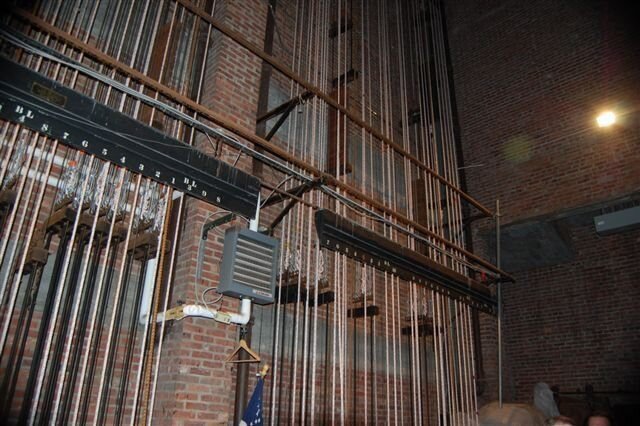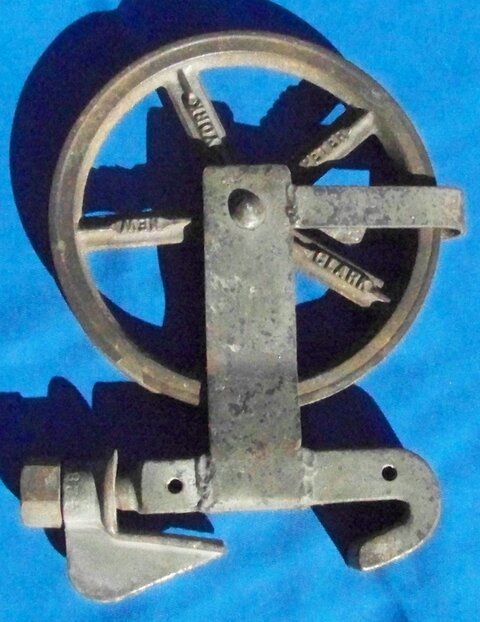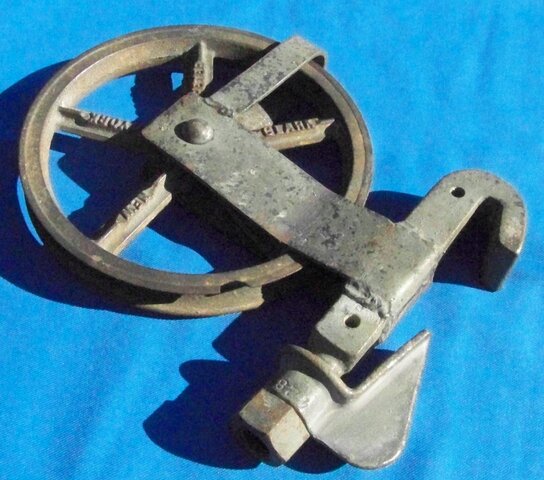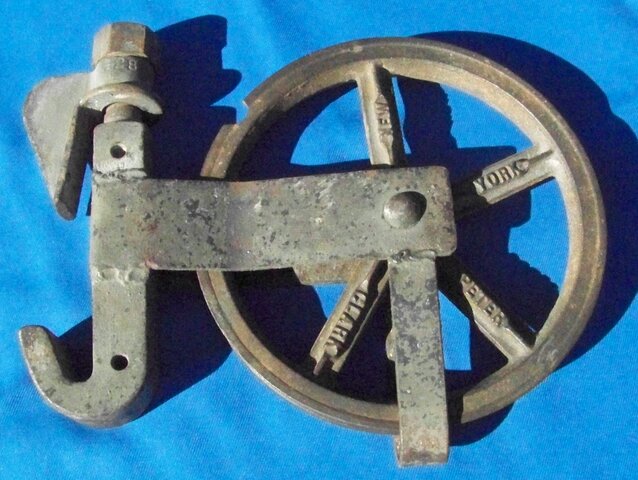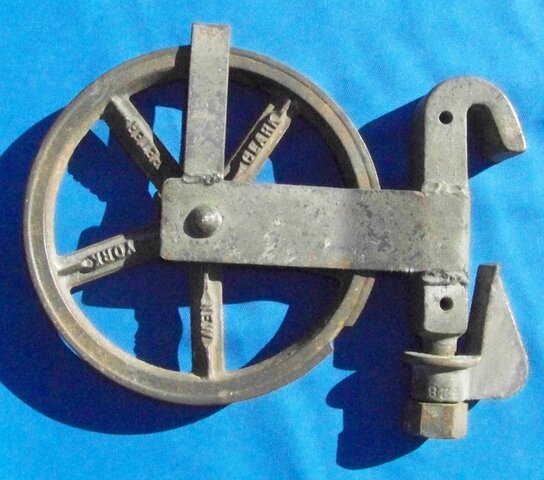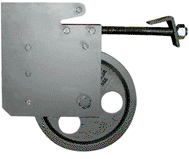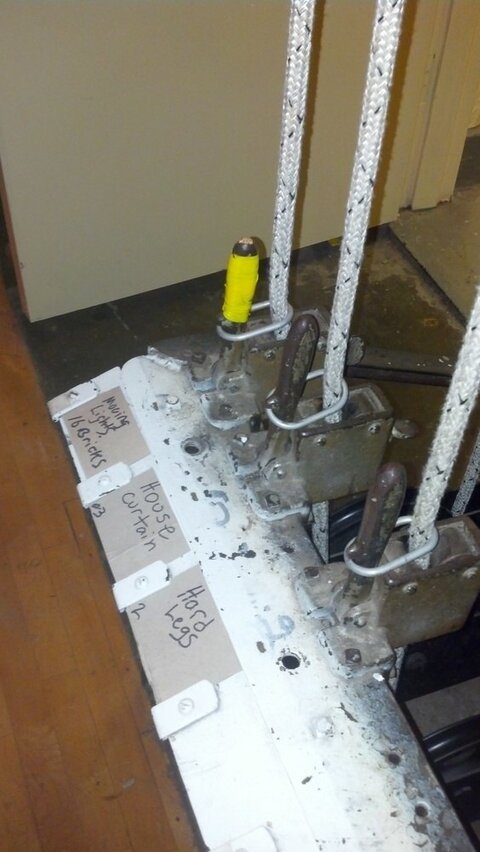The object is just a version of an under hung
loft block. Take a look at a modern version of a JR
Clancy series 19
loft block from their
current catalog. Same design, new technology.
Theatre & Stage Equipment Products - Manual Rigging - Loft Blocks, Underhung 19 Series
Note that the
sheave in the picture is cast
iron but all the side plates and clamp parts
etc are steel. Cast or nylatron sheaves are both available for the blocks in the series. Click the URL and scroll down to the specs.
In and of itself, cast
iron is a fine product. When used as the product is designed and when the product is designed to take advantage of the natural properties of the cast
iron, it is a very strong and durable material. Cast
Iron is extremely strong in compression, (it also dissipates heat well as cookware and stoves prove) . The
block in the OP's pic appears to have steel loops and primary clamp, but the floating clamp jaw next to the
nut appears to be cast. Not really sure though. Where cast is a problem in machines and rigging systems is when it is subjected to twisting, tension, bending or
shock loads. Small nicks or dings can propagate into larger cracks or stress fractures. Cast has a tendency to fail, often catastrophically, with little or no visible deformation or bending before-hand to give a warning.



